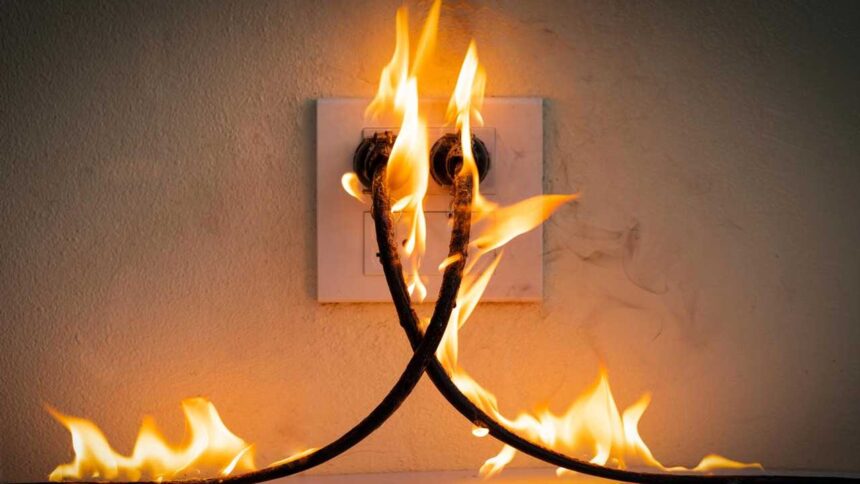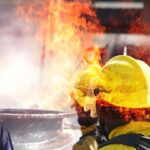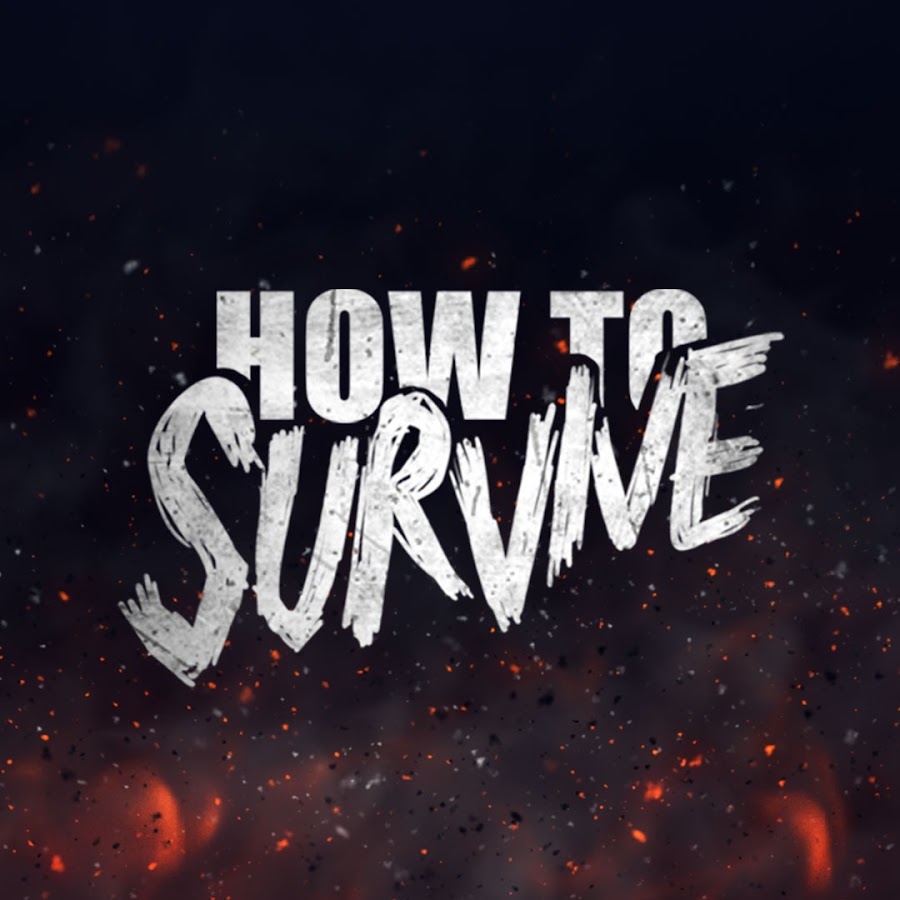It is midnight, and a slight rustle has awakened you from sleep. She smells smoke and opens her bedroom door to investigate. Suddenly you’re overwhelmed by heat and the eerily bright orange light of a raging fire in the hallway.
Would you know what to do in such a dire situation? Do you have the tools and knowledge to keep your family and pets safe if a house fire breaks out or you are trapped in a wildfire?
Most people don’t realize how little time they have to get out safely from a house fire. According to Ready.gov, a house fire only takes 30 seconds to become life-threatening, and most people have less than two minutes to escape before being completely trapped.
But there are plenty of fire safety tips you can use to protect your family and home from tragedy.
How common are house fires?
Most of us assume that a house fire will not occur. However, home fires are pretty standard.
The National Fire Protection Association (NFPA) reports that in 2019, there were 361,500 residential fires in the United States.
The NFPA also reports that 3,700 civilians (non-firefighters) lost their lives in fires in 2019, and 16,600 civilians were injured. In the United States, someone dies in a structure fire every two hours and 56 minutes.
Your risk of dying in a home fire may increase depending on where you live. According to the US Fire Administration (USFA), the seven states with more than 20 fire deaths (excluding firefighters) and the highest rates of fire deaths in 2019 were:
- West Virginia
- Alaska
- Arkansas
- Louisiana
- Mississippi
- Iowa
- Tennessee
Tragically, fire deaths are on the rise. The USFA reports that fire deaths in 2018 were 20.5% higher than in 2009.
According to the NFPA, residential fire property loss totals for 2019 averaged $25,500 per home, up 11% from the prior year. The USFA notes that financial losses from fires have increased by 90.6% since 2009.
Fire Safety Tips
Fortunately, there are many steps you can take to protect your family and home from the devastation of fire.
1. Install smoke detectors
Over the years, smoke detectors have saved countless lives and provided an early warning that can give you and your family enough time to escape. According to the NFPA, nearly 3 out of 5 fire deaths occurred in homes without or working smoke detectors.
You must have working smoke detectors installed on all levels of your home. NFPA recommends installing one inside each bedroom and an additional smoke detector outside each bedroom. Wire them all together so that if one goes out, they all go out. Replace these smoke alarms every ten years.
The NFPA also recommends that you have a smoke alarm in the kitchen. However, it would be best if you were at least 10 feet away from kitchen appliances to minimize false alarms.
It’s also wise to install smoke detectors that detect carbon monoxide. That’s especially important if you have a wood stove or fireplace in the winter.
The US Consumer Product Safety Commission (CPSC) recommends that you change batteries during daylight savings time and test smoke detectors monthly to make sure they continue to work. To avoid false alarms, keep your sensors clean and free of cobwebs and dust.
2. Install fire extinguishers and fire ladders
It would be best to have a fire extinguisher on every level of your home, including the basement and garage, and an extra one in the kitchen.
Install your fire extinguishers high on the wall to be easily accessible and away from children.
You also need to know how to use your fire extinguishers. Read the instructions and become familiar with how they work, as you won’t have time to learn how to use them when there is a fire. Call your local fire department to see if they offer any training for homeowners to use a fire extinguisher.
Also, try to stick with one manufacturer for all your fire extinguishers. Fire extinguishers from different manufacturers work differently, and having further instructions for each extinguisher can be confusing if a fire breaks out.
If you must use your fire extinguisher, remember to aim low (towards the base of the fire), squeeze the lever slowly and evenly, and sweep back and forth.
If you have a multi-story home, you should have at least two upstairs fire escapes in separate rooms in case one room is inaccessible due to fire. Show older children how to install the fire escape at least once a year so everyone knows how to use it safely.
3. Plan your escape
A home fire escape plan is essential because every second counts when a fire breaks out. Remember, a fire can be life-threatening in 30 seconds. And most fires break out late at night or early in the morning when everyone is asleep, so your family needs to know what to do before an emergency strikes. Before the worst happens, ensure everyone in your family knows how to get out and that nothing is stopping that from happening.
Create a fire escape plan.
To make a fire escape plan, start by drawing the floor plan of your home using the NFPA Escape Grille. Find at least two escape routes in each room of your home and draw a map on the grid.
Talk to your family, including young children, about how they can escape from every room in the house. Showing them the floor plan of the house can help children better visualize where they should go in case of fire. Designate a meeting place outside of your home where everyone will gather. It could be a tree away from your home frame or a neighbor’s front porch.
Next, practice escaping each room with your family with a fire drill. Follow these steps from the Burn Institute’s Fire Safe Kid program to teach your family how to get out of a fire safely.
- Learn to get out of bed. It’s best not to jump during a fire like you usually do. Instead, when the fire alarm sounds, get out of bed and crawl to the escape route.
- Stay low. At eye level, the air temperature can reach 600 degrees F (315 degrees C) or higher, burning your lungs and melting your clothing. The air near the floor can be as cold as 100 degrees F, hot but survivable. The air will also have less smoke near the bottom. Crawl as low as possible to stay out of the smoke. If your escape route involves going downstairs, don’t get up. Slide down the stairs face down or get down on your hands and knees.
- Learn to knock on doors safely. Touch the door with your hand or lightly touch the doorknob. If the door feels cold, use your body for support and open the door slightly, just enough to check for smoke. If there is no smoke, leave the room and follow the escape route from your house. If smoke or fire is in the hallway, close the door and leave the room through another door or window.
- Practice closing the door behind you. When leaving your house, close all entries behind you. That can help slow down the progression of the fire.
- Help others. If you have babies, people with mobility problems, or older adults living in your home, assign someone from your family to help them out of the house. If they cannot reach them due to the fire, they should leave the house and immediately inform the fire brigade. Being left alone increases rescuers’ risk when they have two people to save instead of one.
- Make sure everyone knows 911. Everyone in your family should know how to dial 911 or the phone number for your local fire department to report a fire.
- Never go back inside. Please ensure everyone in your family knows never, under any circumstances, should they return to a burning building. If someone is missing from your home, notify the fire department when they arrive. They have the tools and skills to perform rescues.
Practice the fire drill in the dark with the smoke alarms turned on, as these are the most common conditions for experiencing a home fire. Practicing a fire drill at night with the alarm going off when the children are asleep also helps you determine if the alarm is loud enough to wake them up. If the sound of the fire alarm does not wake any children or adults, assign a family member to take care of them during a real fire. Hold a realistic fire drill twice yearly so your family feels comfortable getting out quickly.
But preparing for a fire isn’t over just because you know the route. You must also ensure all exit points are accessible in case someone needs to escape.
Check the windows in your home.
Make sure everyone can easily open all the windows in your home and that they can remove or kick out screens.
If your doors and windows have security bars, ensure they have emergency release latches inside so someone can open them quickly during an emergency. Show your children how to use the emergency release latch so they know what to do.
If windows are nailed or painted, remove or paint the nails so everyone in your family can get out.
Make sure your house is visible.
Go outside and ensure you can easily see your house number from the street. If you can’t, paint your house number on the sidewalk or install more significant numbers so firefighters or other first responders can easily find your house.
Clear your escape route.
You should also go through your home’s escape routes and clear these paths of any furniture or clutter that might slow down or prevent your family from getting out quickly.
- Move televisions out of the way of windows or doors.
- If any of the doors in your house have padlocks, remove these locks and use locks that any family member can easily pick.
- If any doors are blocked by toys or clutter, remove them so the entrance is clear.
- Do not place Christmas trees or other large decorations in front of doors or windows during the holidays.
If you use plastic insulation on your windows to lower your heating bill, make sure everyone in your family knows how to remove it so they can escape.
4. Use space heaters safely
Space heaters can provide a convenient way to heat cold or drafty rooms in your home. However, they present a significant fire hazard. The CPSC estimates that space heaters cause 1,100 yearly fires, resulting in 50 deaths. The NFPA reports that space heaters account for 43% of home heating fires and 85% of associated deaths.
To use a space heater safely, follow these tips:
- Give him space. Keep children and pets at least 3 feet away from your space heater. The heater should also be at least 3 feet away from drapes, furniture, beds, and papers.
- Do not use extension cords. Space heaters should always be plugged directly into the wall. Never use an extension cord or power strip when operating a space heater.
- Don’t run it all night. Never turn on your space heater while asleep or away from home.
- Check the cord frequently. Check your space heater’s cable and plug often to ensure no signs of melting or burning. You should also check the wall outlet and faceplate for signs of excess heat. Unplug the space heater and touch the outlet’s faceplate with your hand to ensure it is cool to the touch. Stop using it and call an electrician if it is warm or hot.
Know that not all space heaters are safe. Check out Consumer Reports’ guide to space heaters to see which makes and models are safest. Before purchasing any model, ensure it is certified by a nationally recognized testing laboratory such as UL (Underwriters Laboratories).
5. Practice open fire safety
Fireplaces and wood stoves can be a cozy and inexpensive way to warm your home in winter. However, they also present a significant fire hazard, especially if safety precautions are not taken.
To safely operate your fireplace and wood stove and reduce the risk of a home fire, NFPA recommends that you clean your chimney every year. Schedule this cleaning and inspection for late summer or fall before relying on your fireplace or wood stove for heat. You can find a certified chimney sweep in your area through the Chimney Sweep Safety Institute of America.
Once cooler weather arrives, never leave a fire unattended in a fireplace or wood stove, and never leave children or pets in the room alone with a burning fire. Also, keep anything flammable at least 3 feet away from your fireplace or wood stove. If you must leave the house, ensure the fire is entirely out before leaving.
It’s also wise to invest in a fireplace screen. Fireplace screens help prevent burning embers from entering the room and igniting anything outside the 3-foot safety zone. A screen can also help protect children or pets from accidental burns, especially with wood stoves with glass windows.
It would be best if you also considered the safety of the candles. Never place burning candles near any combustible material, such as curtains or pillows, and never leave a burning candle unattended. If children are in the room, put the candle on an open mantle or shelf out of their reach.
Lastly, keep a fire extinguisher in a closet or on a shelf within easy reach of the fireplace or wood stove.
6. Check Electrical Safety
Fire Rescue 1 says faulty electrical outlets and outdated appliances cause most electrical fires. If your electrical outlets are old, replace them with a master electrician.
According to Bob Vila, there are several ways to identify electrical outlets that need to be replaced:
- Heat or Heat. Use your hands to feel out. If you detect any heat or notice signs of burning or melting in the plastic, replace it immediately.
- Smoke. Smoke from any electrical outlet is an indicator that a significant fire hazard exists.
- Loose connections. If any outlet is open on the wall or no longer holds a plug firmly (the pin falls out when plugged in), replace it.
- Sounds. If you hear a hum or pop from an electrical outlet, turn off power to that part of your home and call a licensed electrician immediately.
- Frayed wires. Remove the plastic covers from your electrical outlets and examine the wiring. Wires can crack or fray from age, heat, or bending. Nails or screws can also pinch them. Call an electrician if you notice any damage to the electrical outlet wires.
Also, check that you are not using more electricity than your circuits can handle. For example, if you constantly trip breakers in your home or notice lights dim when you use multiple outlets (such as vacuum and microwave simultaneously), have an electrician check your home breaker. . and make adjustments.
Lamps and light fixtures are another possible cause of home fires. Ensure the bulbs installed in each light and fixture in your home do not exceed the manufacturer’s recommended wattage.
Lastly, be sure to use power strips and surge protectors safely. Power strips temporarily add outlets to an area, while you can use long-term surge protectors to protect your electronic equipment from voltage spikes.
Regarding power strips, only plug in light-load appliances like computers or lamps. Never use power strips on heavy-duty appliances such as microwaves, refrigerators, stoves, or vacuum cleaners. They can overheat and ignite when you use them for long periods. It’s okay to use surge protectors for some heavy-duty appliances, like microwaves. But consult the safety instructions or other expert sources on individual devices. For example, a refrigerator may have mechanisms to protect against electrical surges, and a surge protector may interfere with those mechanisms. And make sure your fridge doesn’t come on again when it’s safe.
7. Remember the safety of natural gas
Many homes use natural gas for cooking, heating water, and powering the furnace. A leak in natural gas lines or connections could cause an explosion. Natural gas has no odor, so they add a perfume that smells like rotten eggs for safety.
If you smell natural gas, immediately get your family out of your home and call 911. Never reach for help while inside your home. Sparks generated by the phone could cause an explosion.
If your furnace runs on natural gas, have it checked annually by a licensed heating, ventilating, and air conditioning professional to make sure all plumbing and fittings are in good condition? It is also crucial to keep the area around your oven clean by vacuuming up dirt, dust, and debris and keeping the site clutter-free.
It would be best if you also took precautions with your water heater. Water heaters are often in basements or closets, which people rarely clean. Never store combustible materials near your gas stove or water heater. That’s especially important with solvents, like paints and paint thinners.
8. Teach your kids about fire safety
If you have children, you must teach them what to do if a fire breaks out in your home.
Explain what smoke detectors do.
Start by showing them where all the smoke detectors are and explain what they do. Then let them listen to how the smoke alarm sounds when it goes off. It can be scary, especially for young children, so they need to hear it and get used to it when there is no emergency.
Practice “Stop, Drop and Roll”
In addition to practicing your evacuation plan with your children, you should teach them to “stop, drop and roll” if their hair or clothing catches fire and help them practice the technique.
Teach them not to hide.
Many child fire deaths occur because the child tried to hide from the fire, usually in a closet or under a bed, or from firefighters, who can look scary in their firefighting gear, especially in Darkness.
If you have small children, ensure they understand they cannot hide from the fire. They must get out as quickly as possible. Show them what firefighters look like with all their gear on. If possible, take them on a tour of your local fire department so they learn not to be afraid. You can also watch a video online, like the one starring Sparky the Dog, of what firefighters look like in full gear.
Make it fun
Make learning about fire fun using learning materials at Sparky.org, the National Fire Protection Association’s website for kids, or FireSafeKid.org, run by the Burn Institute. Both websites have interactive games and activities to help children of all ages learn what to do during a fire.
9. Stay safe in the kitchen
According to the NFPA, cooking is the leading cause of residential fires. So it should come as no surprise that the NFPA also found more fires on Thanksgiving than on any other day. The day before Thanksgiving and Christmas Day are the second and third places for residential fires.
To stay safe in the kitchen, focus on fire prevention.
- Make sure you never leave cooking food unattended.
- If you have to leave the kitchen, turn off the stove first.
- If your hair is long, keep it up so there is no risk of it catching on a hot pot or a burning flame.
- Do not wear loose clothing or long dangling jewelry, which could catch fire if you get too close to the stove.
- Be very careful if there are children in the home. Keep all pot and pan handles turned in so a child cannot grab a hot pot.
- Keep any combustible material away from your stove. That includes paper products, kitchen towels, wrappers, or oven mitts.
- Clean up spilled grease as soon as it cools down. Accumulated fat can burn quickly.
If a grease fire does break out, never use water to put it out. The water will turn to steam and cause severe burns. It can also splatter the grease and cause the fire to spread.
To put out a small grease fire in a pot or pan, NFPA recommends sliding a pot lid over the flames and turning off the burner. Allow the pan to cool completely, and do not remove the cover until the pan is cool to the touch. Removing the top too soon could cause the fire to reignite.
If the flame is small and manageable, another Fire Rescue 1 option is to use baking soda or salt to put out the fire. However, never use other cooking powders, such as baking powder or flour, to put out a flame. They have different chemical compositions and could make the fire worse.
You can also use a fire extinguisher or fire blanket to put out the flames.
10. Check your insurance coverage
Find out how much of your “main residence” – the physical structure of your home – is covered by your homeowner’s insurance in the event of a fire. It is known as “Coverage A” in your homeowner’s insurance breakdown. It does not include the contents of your house or the land, only the structure.
Then, check that you have adequate coverage for your personal property (Coverage C). Would you have enough coverage for everything you own if your house caught fire? Does your policy cover the cash value of expensive personal belongings, like jewelry or computers, or the replacement value? If you are a renter, have renters insurance to protect your property.
If your policy does not provide adequate coverage, purchase additional coverage for peace of mind. It is also the perfect time to shop for prices. PolicyGenius brings quotes from multiple companies in minutes, so you know you’re getting the best rates on homeowners insurance.
Next, take pictures and videos of everything in your home and your property. Save a copy of the photos and video to a USB drive and store it at a friend’s or family member’s house. Also, email a copy of the documents or use the online storage. This information helps you provide the evidence needed to prove what you lost in the fire.
You should also have a fireproof safe or security box to store all your essential documents.
11. Be very careful during the holidays
Winter holidays like Thanksgiving and Christmas have the highest number of residential fires. These fires are also deadlier. The Insurance Information Institute reports that 1 in 32 reported Christmas fires resulted in a death compared to 1 in 143 fires for the rest of the year.
Be careful with turkey fryers.
Frying any food increases the risk of a kitchen fire, but turkey fryers are particularly dangerous. This is because you put them on a stand, which can easily tip over and requires large amounts of boiling oil.
Only use it outdoors on a stable surface to reduce the risk of fire when using a turkey fryer. Ensure children and pets stay at least 3 feet away from the deep fryer and don’t allow loud play, such as running or playing ball, anywhere near the cooking area.
Putting a turkey in an overfilled turkey fryer can cause the fat to spill and catch fire. Before filling your fryer with oil, place the turkey in it and add enough water to cover it. Then take the turkey out and note where the waterline is. That allows you to estimate better how much oil you need based on how much liquid the turkey displaces when submerged.
Check the temperature frequently with a cooking thermometer to ensure the oil doesn’t overheat and start a fire. The oil should maintain a constant temperature of 350 degrees F (176 degrees C). You can also invest in an oil-free turkey fryer, like the Char-Broil Big Easy Oil-Free Turkey Fryer, for a safer and healthier way to cook your turkey.
Also, never put a frozen or partially thawed turkey in the hot oil of a turkey fryer. It will explode and shoot flames out of the turkey fryer. Working with a local fire department, CPSC filmed what happens when a frozen turkey is placed in a turkey fryer, and a watch will convince you to make sure your turkey is completely thawed and dry before putting it (segment begins at 0:53 seconds).
One of the reasons for the higher death rate is Christmas trees, which are highly flammable due to their sap content. The NFPA reports that lighting or electrical wires around the tree cause 44% of Christmas tree fires.
If you put up a Christmas tree, be sure to water it every day. If the water level drops below the stump even once, a seal forms over the cut, and the tree can no longer absorb water. Dry trees can catch fire in seconds and set fire to walls or curtains in less than a minute. This fire is also particularly deadly because it heats up so quickly.
That being said, real Christmas trees are safer than artificial trees if you keep them well-watered and at least 3 feet away from any heat sources.
Many families hang Christmas lights to add seasonal cheer to their homes. However, the NFPA advises that Christmas lights can pose a fire hazard without care. Follow these tips to use Christmas lights safely.
- Don’t plug it in too much. Do not connect more than three light kits to one extension cord, which can cause overheating.
- Replace damaged lights. Before decorating your Christmas tree, look closely at your Christmas lights and other electrical decorations to ensure there are no frayed, cracked, or damaged wires. If you see any exposed wiring or melted plastic, discard the decoration. You should also pull out lights if there are any exposed sockets.
- Change to LEDs. LED lights are much more relaxed than electric ones, making them safer to use on a Christmas tree.
- Do not use nails. If you are hanging Christmas lights outdoors, do not use metal nails or screws. They can puncture the outer casing of the lights and potentially cause a shock. Instead, use plastic hooks for outdoor hanging.
avoid candles
Many people like to use candles to add warmth and ambiance to their homes during the winter holidays. However, the Insurance Information Institute reports that candles cause 11% of home fires in December and 10% in November and January.
According to a 2017 survey by the Shriners Hospital, 25% of people leave burning candles unattended in their homes, and 27% leave burning candles within reach of children.
To reduce the risk of fire, keep candles at a safe distance of 12 inches from anything that can burn, and never use them to light or decorate a Christmas tree. Tealights placed on top of toilet tanks for Christmas parties are particularly dangerous. People sit down, and their hair or clothes can catch fire. Never put lighted candles in the bathroom.
If you love the warm glowing candles you bring home, use battery-operated flameless candles, which are much safer.
What to do during a fire
It’s your worst nightmare: your house is on fire, and you must leave your family safely. What do you need to do to survive?
- Remember your escape plan. Stay low and figure out the safest way to escape. If fire or smoke is blocking the route of your immediate escape plan, exit using your secondary escape plan. Don’t forget to check the door and doorknob, risk backdraft, close doors behind you, and get others out if it’s your responsibility.
- Call 911. Your priority is getting everyone out of the house safely. As soon as you get out, call 911.
- Cover vents. If you can’t get out, keep the door closed and cover the vents and door cracks with a cloth or blanket. Call 911 and tell the operator where you are. Signal for help outside a window with a cloth or sheet.
- Protect your lungs. Cover your mouth and nose with a towel or handkerchief, and do the same for your children to reduce smoke inhalation.
- Stay out. Once everyone is safely out of the house, stay out. Do not go back to look for valuables. They are not worth your life.
Another way to keep your family safe is to keep fire blankets by each person’s bed. Use fire blankets as a shield against hot flames and scorching air so everyone can leave the house without getting burned.
Last conclusions
A house fire is everyone’s worst nightmare. However, with planning, preparation, and practice, a house fire must not be a tragedy. You can replace your home and valuables, but not your family. Simple steps like preparing an evacuation plan and practicing with your children go a long way to ensuring they know what to do and how to get out in the event of a fire.
Do you have any tips for preparing for a house fire or getting out safely?









